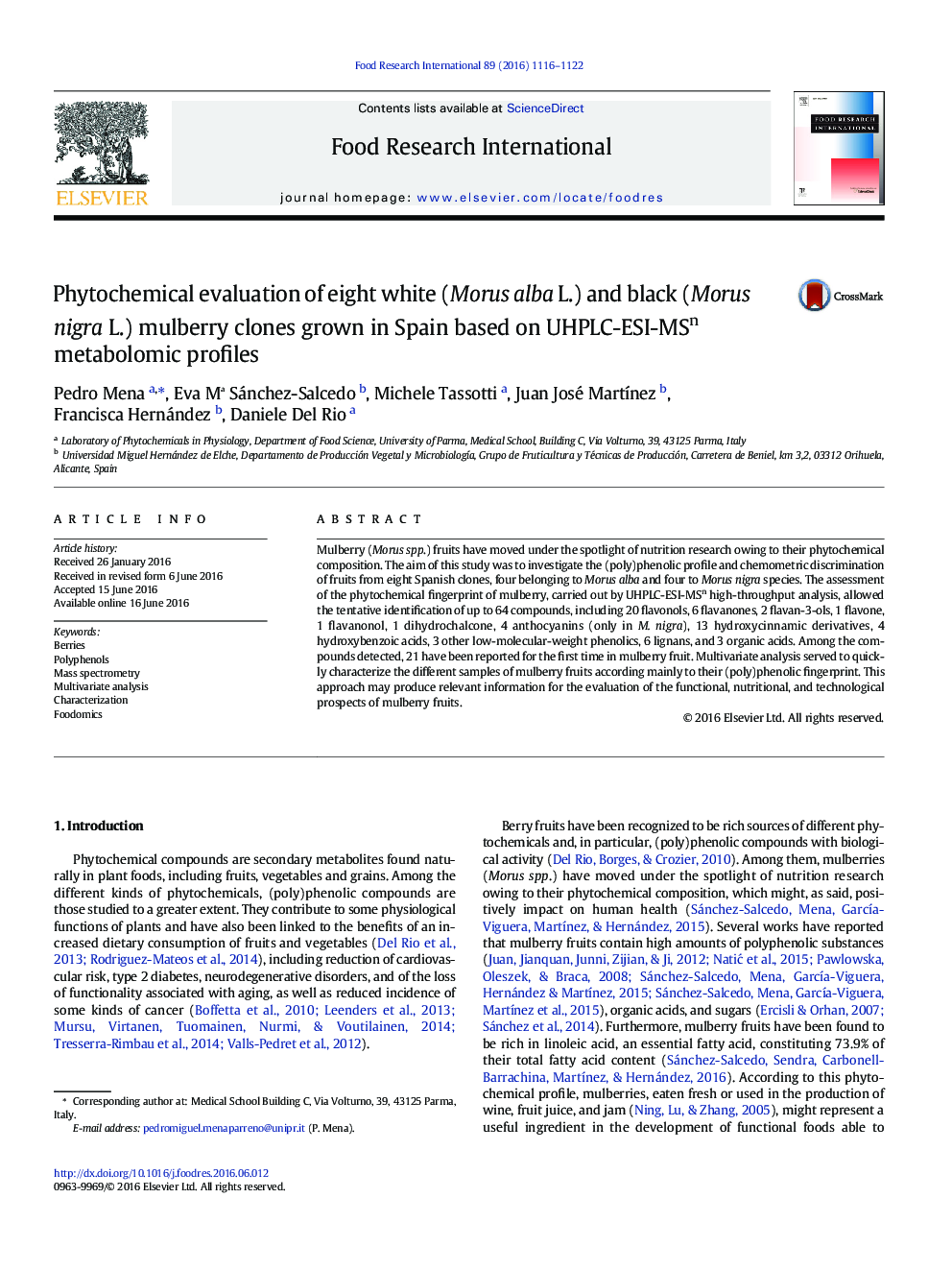| Article ID | Journal | Published Year | Pages | File Type |
|---|---|---|---|---|
| 5768191 | Food Research International | 2016 | 7 Pages |
â¢The (poly)phenolic profile of Morus alba and Morus nigra fruits was described.â¢64 phytochemicals, 21 reported for the first time, were identified.â¢The widest MS (poly)phenolic fingerprint of mulberry fruits to dateâ¢Multivariate analysis allowed a quick discrimination of the clones.â¢Chemometric analysis revealed a great intra- and inter-specific variability.
Mulberry (Morus spp.) fruits have moved under the spotlight of nutrition research owing to their phytochemical composition. The aim of this study was to investigate the (poly)phenolic profile and chemometric discrimination of fruits from eight Spanish clones, four belonging to Morus alba and four to Morus nigra species. The assessment of the phytochemical fingerprint of mulberry, carried out by UHPLC-ESI-MSn high-throughput analysis, allowed the tentative identification of up to 64 compounds, including 20 flavonols, 6 flavanones, 2 flavan-3-ols, 1 flavone, 1 flavanonol, 1 dihydrochalcone, 4 anthocyanins (only in M. nigra), 13 hydroxycinnamic derivatives, 4 hydroxybenzoic acids, 3 other low-molecular-weight phenolics, 6 lignans, and 3 organic acids. Among the compounds detected, 21 have been reported for the first time in mulberry fruit. Multivariate analysis served to quickly characterize the different samples of mulberry fruits according mainly to their (poly)phenolic fingerprint. This approach may produce relevant information for the evaluation of the functional, nutritional, and technological prospects of mulberry fruits.
Graphical abstractDownload full-size image
